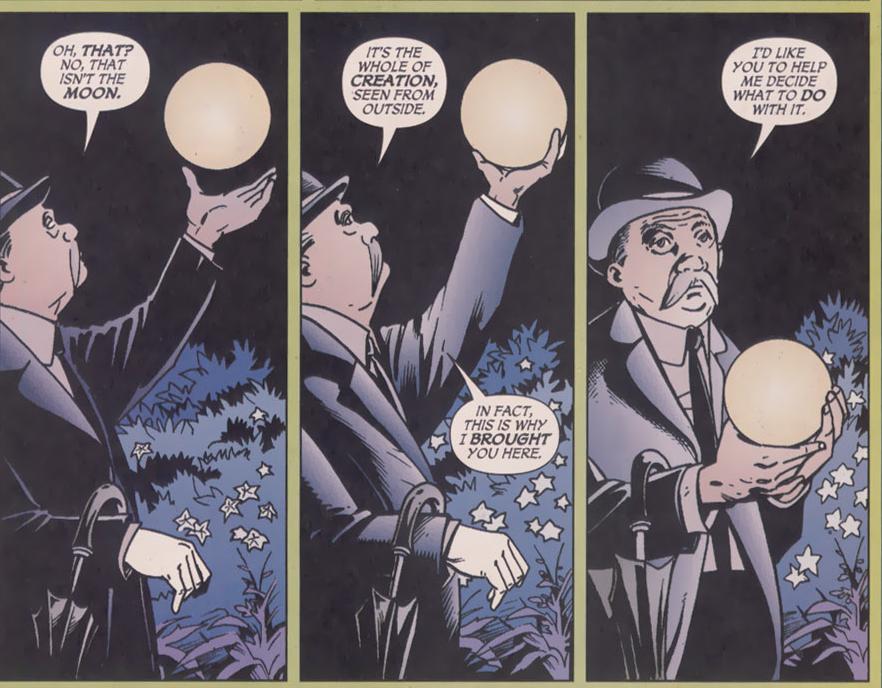- 3,035
- 2,239
- Thread starter
- #81
The basic gist that all of Creation is just a projection of the true reality is shared across all the stories. That all levels of existence including Heaven and Hell are not real but just the human psyche choosing to create their own versions of afterlives. That Maya is the reality from which souls are attached to but is not truly representative of their actual infinite nature.Hmmm, it seems feasible, but can you provide some evidence that support that claim? I wanna see.
So, what I was thinking was merging all of DeMatteis's stories including his Vertigo work. Another story called Millennium Fever also goes over the nature of Reality and matches how DeMatteis tells his story.
Seekers into the Mystery is a telling tale about the relationship between human consciousness with reality and that of Maya and God. Mercy is a very telling tale of how some infinite being radiates love and comes in many forms in his Creation whether it chooses male or female projections. The Last One is a telling tale of an angel that is on the path of guiding others to the truth and eventually his fallen state is restored back to its formal glory after it physically leaves the mortal plane after telling us that God is the director and he's projecting his play(Creation) and that everything will be in unison again. Millennium Fever features Jerome learning about Maiya the nature of Reality and the power of the human psyche in making and shaping Creation. It has very similar storytelling and even art style as Seekers and Mercy. Brooklyn Dreams also is very good in telling the nature of God being the one to create the wheels of duality and existing above duality itself.
We don't need individual aspects of the storytelling but a rather composite view of how Creation functions. All these stories feature Maya as a composite term for Creation/Illsuion. God emanated all of Creation with these two characters being overarching characters that blend these stories very well and there isn't much of a difference in how Maya is described in all the stories. Millennium Fever treats Maya in a more sympathetic route while still remaining a weaver of dreams and illusions.
Last edited:

